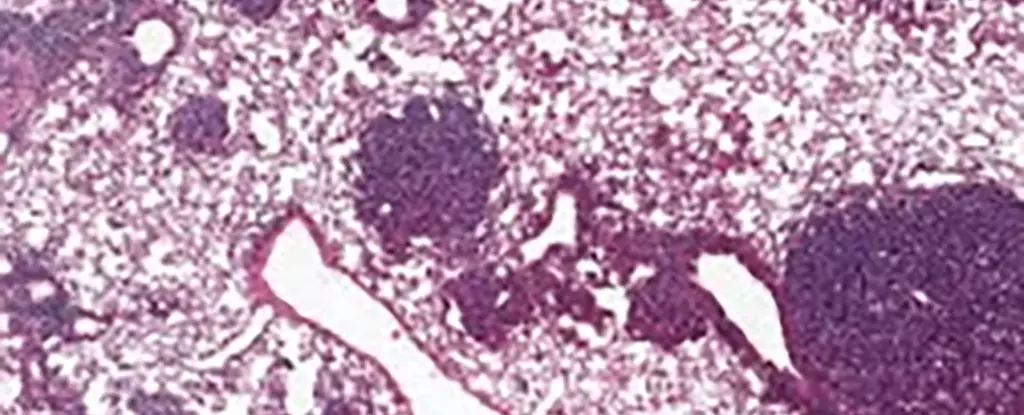Aging is a paradoxical process shaped by biological, environmental, and genetic factors, particularly when it comes to cancer risk. As individuals move through their sixties and seventies, the accumulation of genetic mutations heightens their susceptibility to various cancers. However, an intriguing trend appears in individuals around the age of eighty: the overall risk of cancer begins to decline. Recent research shines a light on this phenomenon, revealing the role of specific cellular behaviors in lung cancers among older populations.
A pivotal aspect of this study centers on alveolar type 2 (AT2) stem cells, which serve as essential players in the regeneration of lung tissue. These cells are not only vital for maintaining healthy lung function but also act as a breeding ground for lung cancer. In an innovative approach, an international team of researchers investigated the cellular mechanisms at play in older mice and observed elevated levels of a particular protein, NUPR1. This protein alters the operation of AT2 cells, creating an environment where these cells begin to behave as though they are experiencing iron deficiency.
While it may seem counterintuitive that aging cells would act as if they were iron-deficient despite having sufficient levels of iron, this paradox underlines an essential aspect of cellular decline associated with aging. As cancer biologist Xueqian Zhuang from Memorial Sloan Kettering Cancer Center explains, aging cells lose their renewal capacity, which is critical for preventing uncontrolled growth commonly seen in cancerous cells.
The discovery surrounding NUPR1 and its influence on iron availability within cells has vital implications. The research suggests a strong connection between NUPR1 levels and cellular regeneration capacity—an interplay that could inform future treatment strategies. When NUPR1 expression was lowered or iron levels were artificially increased, researchers noted a remarkable improvement in the growth capabilities of lung cells. This finding signifies a potential avenue for therapeutic intervention, particularly for the elderly demographic, who are more susceptible to both age-related decline and diseases such as lung cancer.
Additionally, this line of inquiry suggests that similar processes may be at work in human cells. By manipulating iron metabolism, researchers may find new ways to enhance lung capacity, particularly for individuals suffering from long-term effects of diseases like COVID-19.
Intriguingly, the study also delves into the realm of ferroptosis—a form of cell death that is iron-dependent and has emerged as a novel target for cancer treatments. The research indicates that older cells are less prone to ferroptosis due to their functional iron deficiency, which can render them more resilient against therapies that rely on this cell death pathway. This presents a conundrum: for these therapies to be effective, early intervention in younger populations may be crucial.
Zhuang emphasizes that understanding the nuances of aging and its impact on cancer biology is essential. The findings advocate for a renewed focus on cancer prevention that prioritizes the vulnerabilities of younger bodies—a call to minimize exposure to carcinogenic risks.
As the research unfolds, it poses important questions regarding how we approach cancer treatment across different age groups. The interplay between an individual’s age, type of cancer, and existing health conditions is increasingly recognized as critical for the formulation of personalized treatment plans. Tailoring interventions to fit these variables could enhance the effectiveness of cancer therapies significantly.
The complexities of aging and cancer biology reveal just how much there remains to learn. As researchers delve deeper into the mechanisms of proteins like NUPR1 and their relationship with stem cell functionality, new avenues for prevention and treatment will likely emerge. By understanding aging not merely as a biological process but as a factor laden with nuance and variability, we can better address the challenges presented by cancer across all stages of life.

Leave a Reply